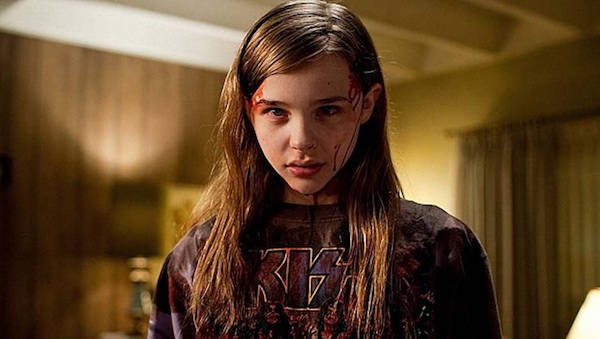In 1974, long before Emily Bazelon’s Sticks and Stones: Defeating the Culture of Bullying, or Dan Savage’s “It gets better” YouTube campaign, or CNN’s endless special reports on cyber-torture–Stephen King wrote the definitive book on bullying: Carrie.
It was his first published novel and Brian DePalma made it into a horror classic in 1976, enshrining Sissy Spacek as its eponymous heroine. (Chloe Moretz revises the role in Kimberly Pierce’s remake, opening October 18). Brutally mocked by high-school mean girls, Carrie exacts an almost perfect revenge. No, not through a time-consuming lawsuit, but swiftly and efficiently, through telekinesis.
After being doused with pig’s blood at her high-school prom (I suspect that would be even more disturbing than cruel words delivered via Kick), she locks the prom-goers in the gym, slaughters her antagonists, and reduces her high-school to rubble. Not to project my own neuroses, but, really, what high-school student hasn’t at some point fantasized about doing just that?
Bazelon thinks bullying can be ended through “the power of character and empathy.” These are, of course, great traits, but they can’t hold a candle to telekinesis. My advice? Don’t just teach children to preserve their dignity and respect the dignity of others. Teach them to move objects with their mind.
This not as preposterous as it sounds. At the Johnson Space Center in Houston, TX, for instance, NASA physicists are now experimenting with ways to produce “warp speed” — a concept from fiction that until recently was not thought to be possible.
Medical scientists have developed robotic arms for people with locked-in syndrome; the arms move telepathically, signaled by the patient’s brain waves. Even skeptics admit that children often manifest uncanny psychic abilities. I myself had rich precognitive dreams, but I was not encouraged to develop psychic strengths. Instead, like most teens, I squandered time racking up As, cramming for the SAT, and participating on sports teams.
True, Carrie’s revenge is not perfect. She does not survive her rampage. She is undermined by her unsupportive mother — so unsupportive that when Carrie finally banishes the negative people from her life, her mother stabs her. In response, Carrie telekinetically stops her mother’s heart, but not before she herself has been mortally wounded.
Steven King’s novel ends with an account of a girl similar to Carrie who is developing her telekinetic powers. This suggests that the world is full of Carries — even as it has been full of other theatrical, musical, and film adaptations of King’s novel.
To celebrate yet another movie version, I urge you to concentrate on the heavy paperweight on your desk. Use your mind to lift it into the air. And if you have been mocked or intimidated, consider whether that paperweight might be used as a deterrent.
I agree with Dan Savage’s YouTube campaign. With time, things do “get better” for the LGBT kids and the smart, weird kids and the other traditional targets of high-school persecution. But I hope the new version of Carrie strikes fear into the heart of every bully who watches it. I hope it makes them think twice before they mess with seemingly a weaker kid, either online or in person.
At first, Carrie seemed like perfect prey, a weak and vulnerable teenager. But looks, the film remind us, can be deceiving.
Want more classic horror? Stream FilmOn’s Horror network:

